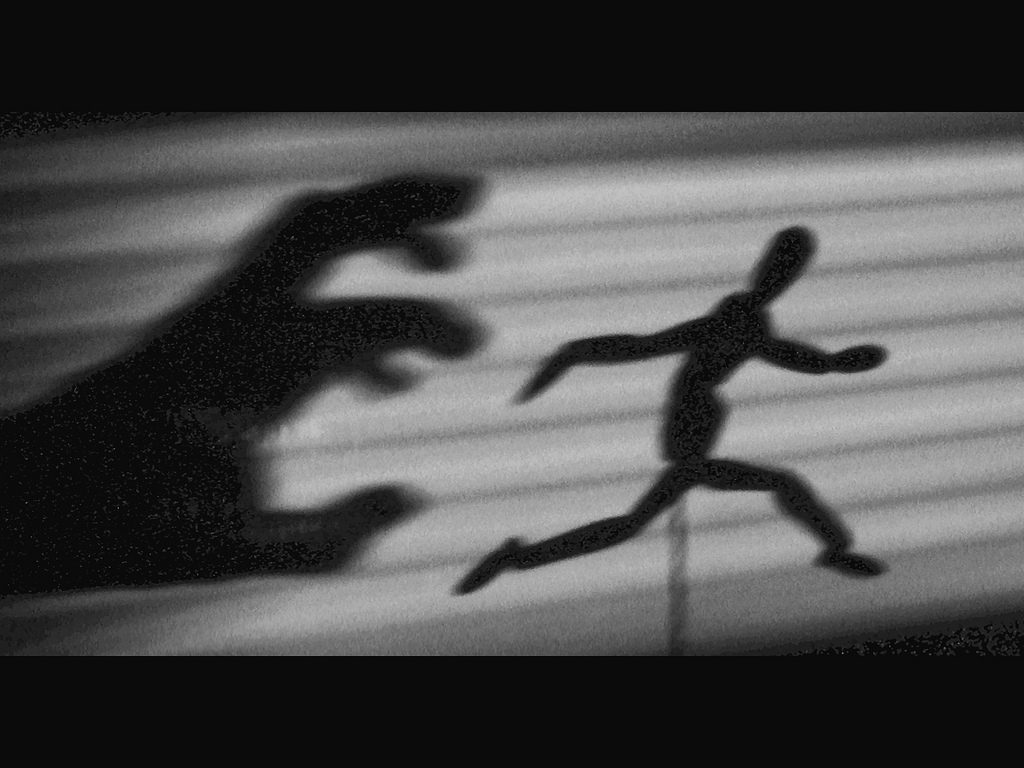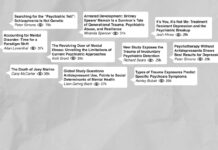[Note: To hear an audio version of this report, click the play button below]
New data, published in the European Journal of Psychotraumatology, suggests that trauma-focused treatment that is intensive and condensed contributes to reduced PTSD symptoms and lower dropout rates for individuals experiencing complex PTSD. Dr. Hendriks and researchers in the Netherlands tested an adapted version of prolonged exposure therapy with individuals who had histories of repeated interpersonal trauma and multiple treatment attempts.
“Overall,” the authors write, “this study suggests, in line with previous [randomized control trials] RCTs that [prolonged exposure] PE delivered in an intensive format is effective for PTSD patients.”
They explain that these findings are novel because of the lack of existing research in this population:
“This is especially noteworthy given that our sample mainly consisted of patients who had experienced multiple childhood trauma and reported symptoms of ICD-11 Complex PTSD, expanding the evidence base for the effectiveness of intensive TFT to a more complex patient population.”

Previous studies have demonstrated suboptimal response rates and relatively high dropout rates for trauma-focused treatments. On average, about 60% of people who receive trauma-focused interventions respond with reduced PTSD-related symptoms. Roughly 18% of people drop out of trauma-focused therapy, reaching a high of 52% in some studies, as definitions for both “trauma-focused treatment” and “dropout” vary across studies.
To improve trauma-focused treatment, some have suggested increasing the frequency and intensity of delivery. It is hypothesized that offering multiple sessions in a short period will bolster outcomes and reduce dropouts. Increased frequency and intensity can aide in “fear extinction,” or the reduction of fear associated with specific events and triggers. The distinguishing feature of exposure therapies for trauma is the reduction in avoidance of trauma-related memories, shown to reduce anxiety.
Despite these existing mechanisms and hypotheses about treatment, there is ongoing debate surrounding how to treat “complex PTSD,” as it is defined according to the ICD-11 system. Complex PTSD is characterized by PTSD symptoms (avoidance, flashbacks, and so on) with the addition of “disturbances in affect dysregulation, negative self-concept, and interpersonal problems,” the authors explain.
For this study, Hendriks and colleagues developed a trauma-focused intervention for complex PTSD. They write:
“To bridge the knowledge gap concerning the effectiveness of [trauma-focused treatment] TFT for more complex patient populations, we developed a highly intensive TFT program for those patients with a likely diagnosis of ICD-11 Complex PTSD after multiple interpersonal trauma that had a history of multiple treatment attempts as the next step in their treatment.”
The primary aims of their study involved running a clinical trial to (1) investigate whether their highly intensive trauma-focused treatment program reduced both PTSD symptoms and dropout rates, (2) evaluate the safety of the treatment and (3) identify specific treatment response patterns and their predictors.
Participants included 73 individuals from Dutch treatment centers who met DSM-IV-TR criteria for PTSD and had histories of multiple interpersonal traumas and multiple treatment attempts. Those who had comorbid medical conditions requiring more immediate care, a recent history of suicide attempts, “severe intellectual impairment defined as an estimated IQ of 70 or less,” and an inability to speak and write Dutch were excluded from this trial.
The tested intervention was based upon prolonged exposure (PE) therapy. Rather than meeting weekly, however, the intervention was delivered in a highly intensive format that then tapered. This involved 4.5 hours of treatment each day for the first four days. During this intensive phase, participants received information about the nature of the treatment and practiced “imaginal exposure.” Imaginal exposure is when one recounts their trauma memory as vividly and in as much detail as possible with closed eyes and in the present tense. One hour per day was devoted to this activity in the intensive phase.
Following the intensive phase, participants received four weekly booster sessions combined with homework assignments aimed to facilitate learning and application of the intervention into their everyday contexts and lifestyles. Treatment completion was defined by finishing the intensive phase of the intervention as well as two booster sessions, and dropout was reported by the therapist.
PTSD symptoms were evaluated at baseline, posttreatment (one week after the final booster session), and at three- and six-month follow-ups. Self-reported PTSD symptom severity was also assessed at each booster session. As the researchers were also interesting in identifying patterns of response across participants as well as what factors may have predicted these patterns, they examined participant (1) demographic categories and living conditions, (2) initial diagnostic severity and pharmaceutical drug use, and (3) fear habituation, or reduced fear response as it occurred within the first session, and between the first and second sessions.
Results demonstrated that this intensive, prolonged exposure therapy intervention successfully reduced PTSD symptoms, and that the reduction persisted throughout the three- and six-month follow-up.
“One possible explanation for these findings is that some PSTD patients have more trouble overcoming their avoidance behavior and, therefore, are in need of a compact treatment program instead of weekly standard TFT that leave the patients more room to engage in avoidance behavior between sessions,” Hendriks and team explain.
Yet, as the authors state, this explanation cannot be supported by the study design’s lack of control group inclusion. Concerning attrition, the authors report “None of the participants dropped out during the intensive phase and 95% completed the treatment as defined as the intensive phase and at least two booster sessions.”
Although four participants reported symptom exacerbation at one point during the intervention delivery, and one psychiatric hospitalization occurred to prevent suicide, the remaining 69 participants fell into one of following four categories: (1) Fast responders (n = 9) were those that showed symptom reduction immediately after the intensive phase; (2) Slow responders (n = 18) were those that showed no response after the intensive phase, but did so during the booster phase; (3) Partial-responders (n = 22) were those that showed partial response during the intensive and booster phases and in follow-up , and (4) Non responders (n = 20) were those that did not show a response at all.
Additional analyses found that patients who showed more fear habituation occurring between the first and second imaginal exposure session were more likely to belong in the “Fast responders” group than in the “Non responders” group. In addition, patients living alone were more likely to be in the “Partial-responders” group than in the “Non responders” group. Although contrary to the previous literature, the living alone predictor may be attributable to this particular sample because the presence of a partner could have served to maintain PTSD-related avoidance behavior.
However, none of the tested clinical variables predicted treatment response. The authors comment on this finding:
“This is promising as it suggests that even patients with (severe) comorbidity might benefit from intensive TFT programs like ours. Together, these findings suggest that, contrary to what clinicians generally assume, several baseline demographic and clinical variables do not interfere with treatment and are thus no robust contra-indicators of (intensive) TFT interventions. We rather found that early treatment process variables were better predictors of treatment success.”
A number of limitations to this study exist and are acknowledged by the authors. The first being that because there was no control group, a randomized control trial (RCT) is warranted to provide replication for the intervention’s effectiveness. Secondly, because of the specific population selected for this intensive treatment format, the generalizability of this study is limited. Additional limitations are listed in the original paper linked at the bottom of this article.
These findings contribute to the literature by challenging existing notions that patients with PTSD symptoms need an initial stabilization phase of emotion regulation skills training before beginning treatment, the authors contend. They also demonstrate that this kind of high-intensity treatment can be delivered within a short period of time or when patients prefer a more condensed treatment plan.
Hendriks and team describe the intensive prolonged exposure intervention as a “feasible next step” in trauma-focused treatment. They conclude:
“The results of the present study provide preliminary evidence that intensive stand-alone TFT (without any preparatory or additional module(s)) and, more specifically, stand-alone intensive exposure, is effective and safe for PTSD patients with a likely diagnosis of ICD-11 Complex PTSD.”
****
Hendriks, L., Kleine, R. A. D., Broekman, T. G., Hendriks, G. J., & Minnen, A. V. (2018). Intensive prolonged exposure therapy for chronic PTSD patients following multiple trauma and multiple treatment attempts. European journal of psychotraumatology, 9(1), 1425574. (Link)















Am I the only person that finds this therapy abhorrent?
Report comment
No. “Prolonged exposure” sounds pretty “chronic” to me ensuring an expanding and long life for the “trauma” treatment business. Some “drop outs”, after all, might do so because they see no need for treatment. “Against medical advice”? When the treatment is usually poison, it could be all for the best. “Complex PTSD” might could use a little simplifying, as in, “Alright, friend, enough. It’s out the door with you.”
Report comment
Some people actually do have psychological problems that they need and want help with, Frank.
Report comment
Yes. But they won’t find it at the local mental illness center, sadly.
i don’t know anyone I hate enough to recommend those places to.
Report comment
Rachel,
While you did not find it helpful, many others do. My large MH center has a wait of 1-2 months to get in, and people aren’t leaving in droves once they start treatment. The fact is that some people find community MH to be helpful, some find it to be neutral, and others find it to be traumatic such as yourself.
Report comment
Well Shaun there was a reason I attended day treatment regularly though not court ordered. Segregation is less painful than isolation. Thus lepers and other outcasts form communities.
I got tired of the put downs and depressing talk by the case workers running the show. Telling us we were hopeless. Calling us “kiddos” and acting surprised when I politely asked them not to.
Pretty lonely now. Trying to fix this.
I still can’t work so I tell folks I have Chronic Fatigue Disorder. This answers the question, “What do you do?” But they don’t treat me like a cross between Forrest Gump and Norman Bates.
Making friends at church, the library, and a local chapter of Toastmasters. As a human being–not a disease!
Report comment
We all seek connection with other human beings. No doubt you aren’t defined by any disease you may be diagnosed with. Clearly your experience was overall quite horrible in the MH system.
Report comment
Out, exposure therapy is one of the best know ways to help people cope with severe anxiety, which is what complex PTSD is. Avoidance is the hallmark of anxiety (in addition to intrusive worries), and until the avoidance is addressed, the anxiety will likely stick around and cause the person additional and worsening suffering. People with phobias, for instance do well when the go through the full exposure protocols. Also, EMDR for trauma is an exposure-based treatment which has shown positive results for many trauma survivors.
Report comment
Nope. You’re not the only one, out.
Report comment
I agree with you feel the same way service-connected veteran with PTSD do not want to be retruamatized.
Report comment
I was in a university study that utilized P.E. for those of us with C-PTSD and I found it quite retraumatizing. I am a survivor of multiple traumas that had regularly occurred in my childhood and early adulthood and it was rather ludicrous reciting only one of those traumas over and over and expecting that to have any effect whatsoever on all the rest of the traumatic events I survived. It would’ve taken years and years of P.E. to even process every trauma I survived. I found the process to be very ineffectual as well as increasing the effects of my C-PTSD. When I ended my participation in that so-called therapy I did some online searches to see if others had shared my experiences with it and I found some others who shared my take on it, most of whom were war veterans, which I am not. Like them, however, I also found great relief once I ended all participation in PE. Like DBT (Dialectical Behavioral Therapy) I think PE is highly overrated. Both have become very popular in the psychiatric community over the last ten years, the new panaceas. I wasn’t impressed or helped by either. In fact, ending therapy completely brought much more relief to me than any therapy ever did while I was still participating!
Report comment
This might be helpful for a person who is in a relatively strong and safe position and who CHOOSES to try out this approach on their own CHOSEN points of anxiety. To suggest that this would be a good idea for all or most people qualifying for a c-PTSD diagnosis is ridiculous. Actually, suggesting that any one approach will be helpful to everyone in this category is ridiculous. It would completely depend on the circumstances, preferences and personality of the person who is suffering these effects, as well as the relationship between them and the therapist.
The big mistake the psychiatric model makes is assuming that they can group people together by “symptoms” and somehow know what will help everyone in the group.
Report comment
I agree completely, Steve McCrea.
Report comment
GGGren, what treatment do you feel most comfortable in dealing with C-PTSD? I feel a person-centered approach is safest and least likely to end up making the person feel worse afterwards.
Report comment
I don’t feel comfortable with any treatment for my C-PTSD, shaun f. I’m 63 and have been through every sort of “therapeutic” approach that’s been offered since I was a teen and I have found more help from my friends and other people with C-PTSD than I ever had from any official “therapy.” For example, sharing about my traumas with Vietnam veterans helped me more than any “therapy” ever did, undoubtedly because the vets also had C-PTSD and accepted me and what I told them unconditionally. We didn’t try to “fix” each other. We simply accepted one another unconditionally so we were emotionally safe with one another. I’ve never had that experience with any therapist, and I’ve had many of those. My peers helped me (and still do) more than any so-called therapy or therapist ever did. If you met me and got to know me you would never know I have the disorders I have, all because I have been so thoroughly helped by my friends and fellow survivors.
Report comment
I’m happy to hear you found a support system that worked for you. I’ve talked with many clients who’ve received no help from family, friends, or peer support (like AA), which is why they have come to the MH center. Too often they tell me that they are judged or misunderstood by others in their lives. In my work as a therapist I try and do exactly what your support system does, which is the listen, understand, and provide a safe place to process.
Report comment
Sadly Shaun, once folks in their lives find out they have an SMI diagnosis, they will have no support system outside the community center at all. 🙁
If they’re lucky, they’ll get away with a mild label like depression or anxiety disorder. My sister-in-law and mother are diagnosed with clinical depression and keep reminding me of how inferior I am with my “bipolar” label–which no longer fits and was drug induced to start with.
Report comment
Certainly you are right Rachel that the stigma people face with a MH diagnosis can be quite profound and difficult. I have also seen that family members and friends can tend to be judgmental, invalidating, gas lighting, etc., way before any diagnosis was given out. Most of my clients are trying to recover from this damage they receive from others in their lives.
Report comment
I don’t know what definition of “effectiveness” was used in this study – I guess it was whether there was ANY response to the treatment and not whether people were still “symptomatic” as two thirds of people’s self-reported symptom scores indicated that they still may have PTSD after six months. You get this kind of nonsense when psychologists want to sound scientific and do research based on medical model thinking
Report comment
“some have suggested increasing the frequency and intensity of delivery” —for frequency of intensity I think I would turn my compass towards psychedelic research. whenever I hear the words short and sweet in the psychiatric nomenclature I am usually staring down a pill bottle. I think all of this is driven by fiscal concerns and that’s all.
Report comment
This is very strange to me. Cptsd was the last diagnosis I received, based on disorganized attachment and severe and chronic abuse during childhood. My understanding was that the diagnosis largely originated because so many patients got so much WORSE with exposure therapies/talking about their traumas. That was 100% my experience. When I learned about the diagnosis I read that a lot of the false memory lawsuits were based on this and the retrospective research revealed that the people who reported trauma but deteriorated from exposure/rehashing trauma all had disorganized attachment, which makes sense because people with disorganized attachment cannot re-encounter traumatic content without dissociating — they dissociate upon talking about their parents in the adult attachment interview and its diagnostic. A lot of the somatic therapies came about because rehashing traumatic content and ‘imaginal exposures’ as you call it drove so many people with complex trauma histories into severe distress or suicide. Now the intervention is being touted as most effective FOR cptsd? I can’t follow this thread at all.
As an aside, this sounds an awful lot like cognitive processing therapy. It’s noteworthy that such therapies increase the rate of suicides. I’d imagine what you’re talking about would make it so much worse.
Report comment